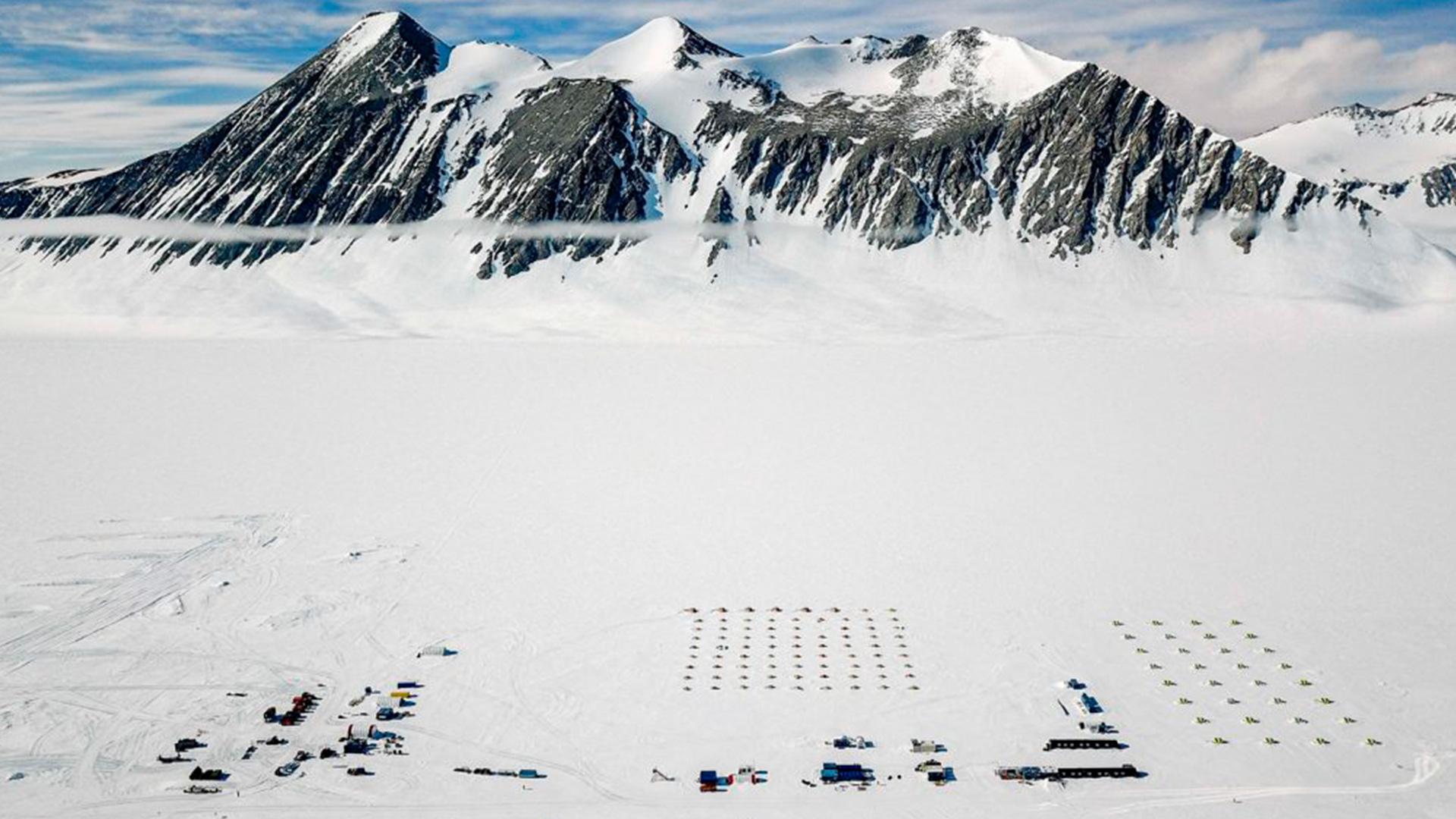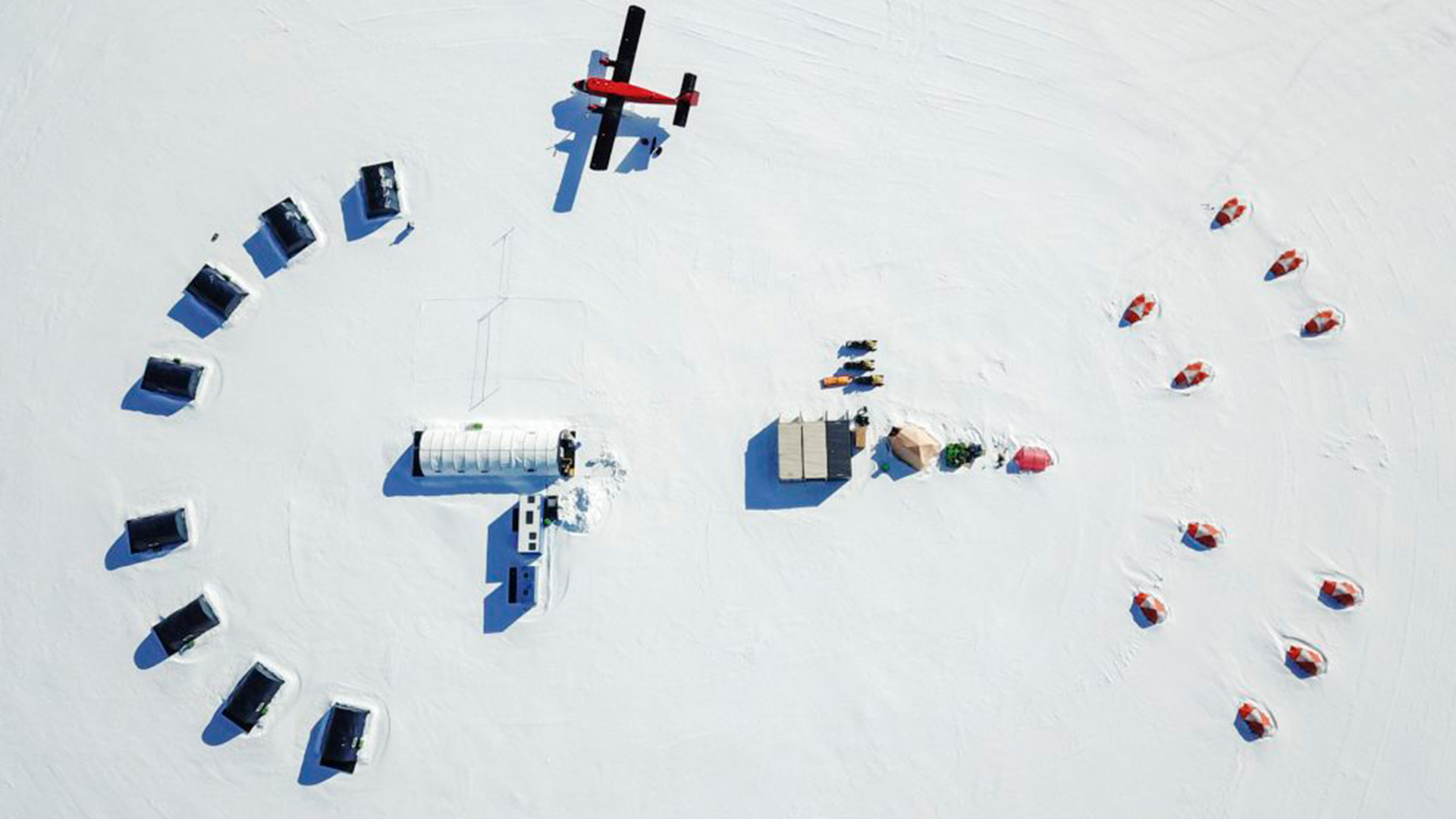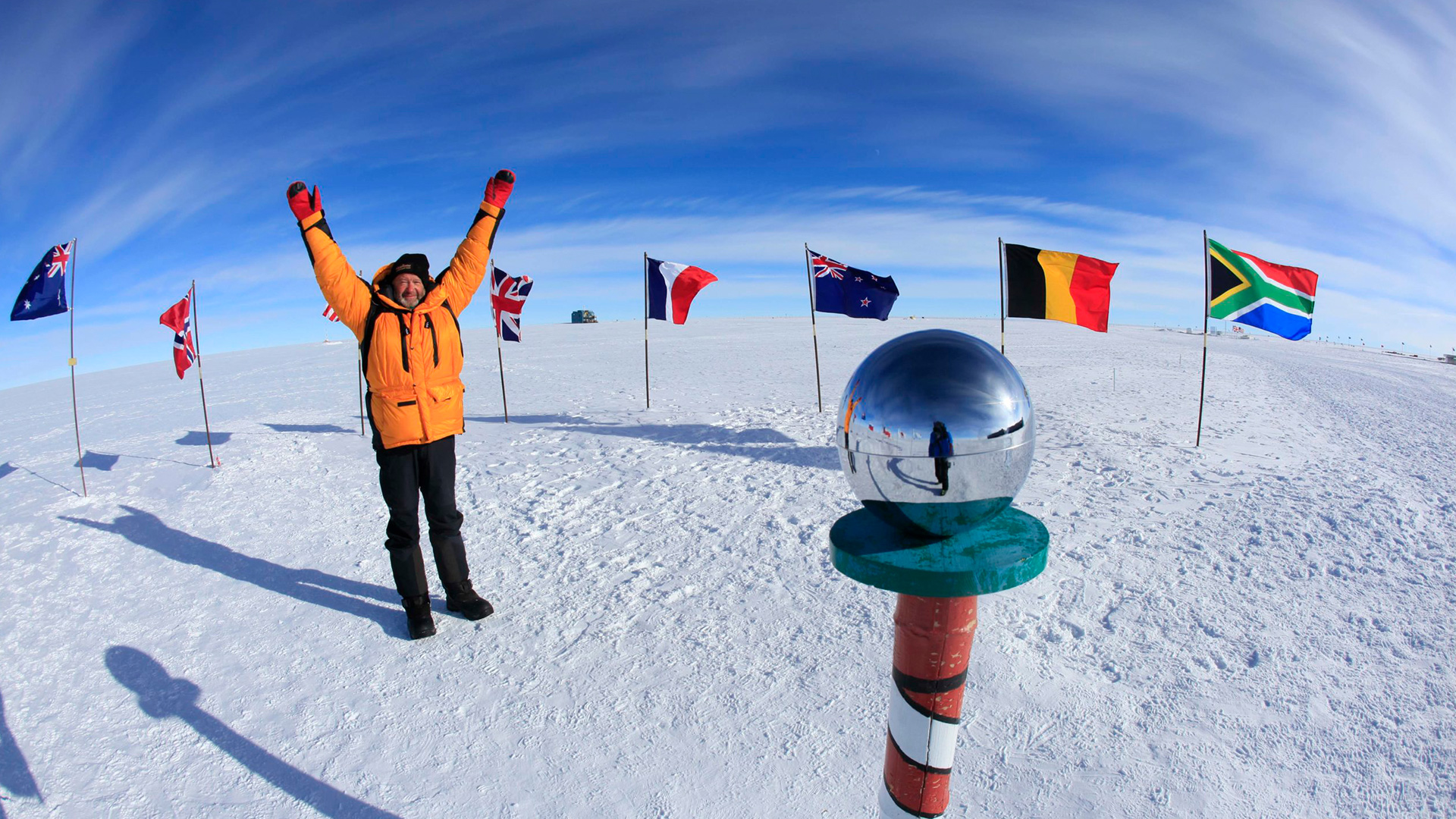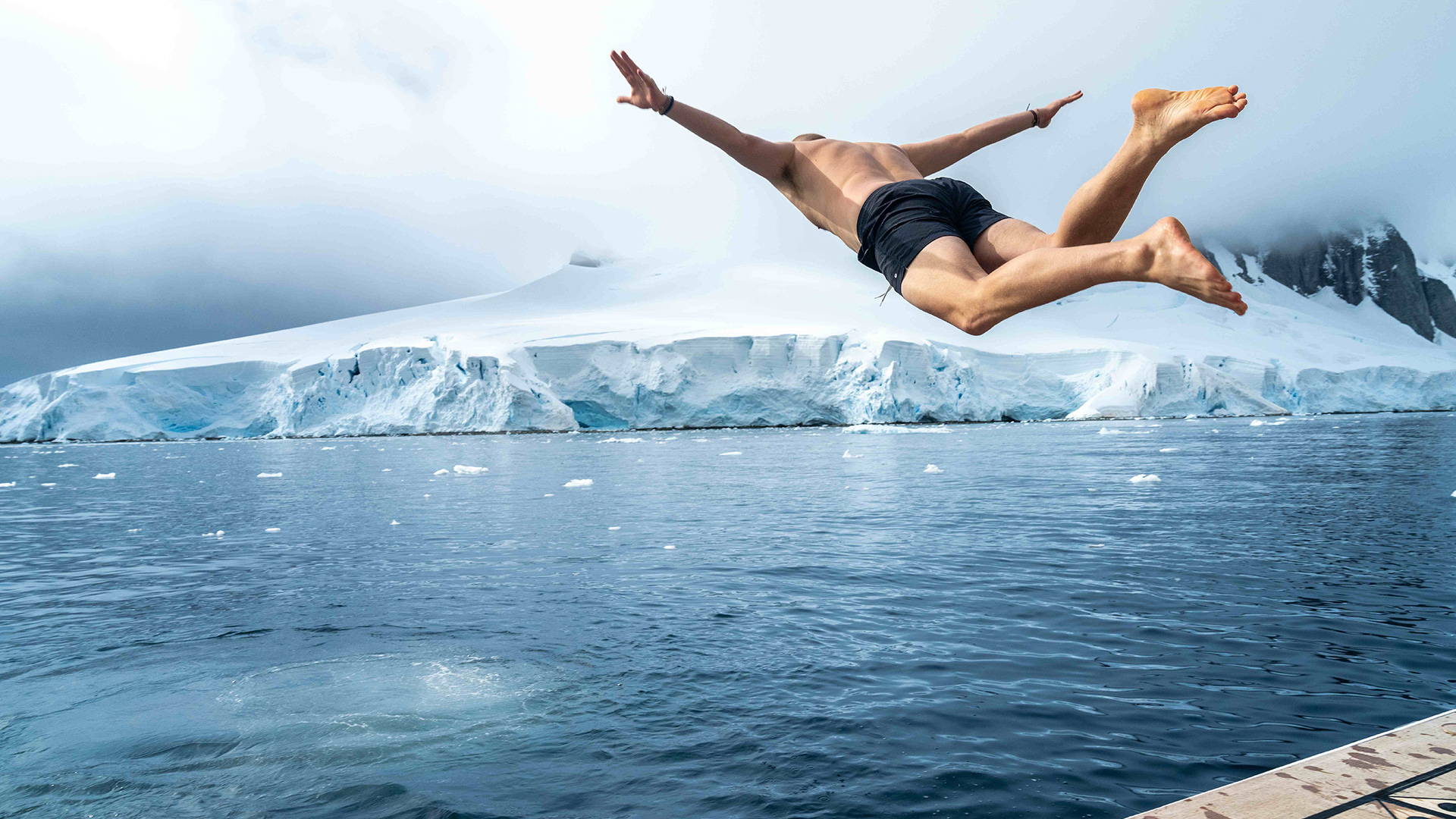“The South Pole is a tremendous experience, one that has to be earned by all who venture here. For many it is life-altering; it changes our understanding of our planet and gives a greater context to our existence. To stand here, quite literally at the “end of the Earth’ is a profound privilege.” – Rob McCallum, EYOS Co-Founder
In the Austral summer of 1911, Norwegian Roald Amundsen became the first explorer to reach the South Pole. This concluded the legendary race against his British rival Sir Robert Falcon Scott. Amundsen went on to worldwide acclaim while Scott famously perished on his return from the Pole. Until then, the extreme conditions of the world’s highest, coldest, and windiest continent had prevented all previous efforts, including Ernest Shackleton who turned back just 97 miles shy of his goal. Over one hundred years later, there remain few places on Earth as remote, exclusive, and awe-inspiring as the South Pole. To journey here is to follow in the footsteps of some of the greatest explorers the world has ever known, and to experience a landscape most can only dream of.
Although the destination remains the same, the journey today is very different from those of the early explorers. We depart Patagonia during the summer and fly 1800 miles to arrive directly onto a blue-ice runway at 80 degrees South. Our first foray in Antarctica is at the isolated and tranquil Three Glaciers Retreat, just over 600 miles (1,000km) from the South Pole. From the warmth and luxury of double-walled heated sleeping tents, there are options to snowmobile, ski, hike, climb and explore the natural highlights of this stunning landscape. This is ‘deep field’ Antarctica and the perfect launch point for our quest to reach the Pole.
Meteorologists keep a watchful eye on the conditions and once a weather window opens, we take flight in a modern ski-equipped aircraft and head due South. In a journey that took Amundsen 3 months, the flight from Three Glaciers to the Pole now takes only 4 hours. The route passes over the Thiel Mountains and the vast high-altitude polar plateau, our aircraft providing views of the endless expanse of the sastrugi, crevasse fields, and ice that challenge all who attempt the Pole by overland route.
Once at the South Pole, we settle into our camp of heated tents to acclimatize and adjust to this ‘other-worldly’ landscape. After refreshments we don our heavy polar suits and head out to complete our task; to stand where all 360 lines of longitude and all time zones meet; the South Pole. Standing here, where all points on Earth are north, we reflect on the challenges faced by those early explorers and the conditions they endured. Standing where the ice is almost 10,000 ft (3000 m) thick and temperatures can range from -31° to -13°F (-35° to -25°C), we are humbled by their efforts.

We retire to our camp to relax, enjoy a hearty meal, and to sleep in what is one of the most exclusive campsites on our planet. In the morning we revisit the Pole before heading back with a broader worldview and a new appreciation for these exclusive adventures that become the milestones of our lives.
To follow in the footsteps of Amundsen and venture deep into the White Continent, contact EYOS at [email protected] to inquire about the 2024 season and start your journey.




